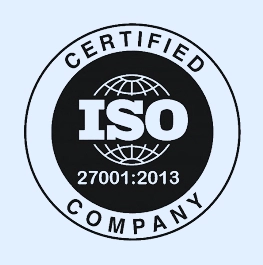No matter what industry or market you’re in, understanding your customer’s needs, desires, and overall experience is crucial for long-term success. Many businesses still see the customer relationship as a series of separate interactions—like advertising, sales, or customer service. But in reality, for the customer, all these interactions are part of a continuous journey where each touchpoint shapes their impression of the brand. To truly understand and improve the customer experience, businesses need to adopt a “customer journey” approach. Curious about what that means? This article is just for you.
What Is a Customer Journey?
A customer journey includes all the points where a customer interacts with your brand, from first discovering the business, through the purchasing process, and all the way to post-purchase experience. Unlike traditional methods that focus mostly on the purchase itself, the customer journey approach looks at the entire experience. It examines every point where the customer encounters the brand, their thoughts and feelings at each stage, and the factors influencing their decisions. A deep understanding of the customer journey allows businesses to adjust messages, communication, and experiences at each stage to meet customer needs and expectations through effective segmentation and personalized messaging. This maximizes satisfaction, strengthens brand loyalty, and increases the chances of repeat purchases and referrals.
It’s important to note that a customer journey isn’t always linear or identical for everyone. Each customer may move through the stages in a different order, skip certain steps, or even revisit others multiple times. Businesses must be flexible, adapting their approach to different customer segments and personas, while understanding the unique characteristics and needs of each.
6 Key Steps for Building an Effective Customer Journey
Creating a meaningful customer journey map involves several essential steps:
- Define Your Target Audience – Accurately identify your customers and understand their characteristics, needs, and expectations.
- Map Out Touchpoints – Identify all the points where customers come into contact with your brand, such as ads, your website, social media, conversations with sales reps, and customer service.
- Analyze Behavior and Preferences – Observe customers’ actions and responses at each interaction stage—what motivates them, and what barriers do they face?
- Identify Pain Points – Detect any challenges, frustrations, or obstacles customers may encounter along their journey.
- Develop Solutions – Create strategies to improve experiences at pain points, removing barriers and meeting customer needs effectively.
- Measure and Optimize – Continuously track the performance of the customer journey, analyze results, and make ongoing improvements.
What Are the Goals of Crafting a Customer Journey?
The ultimate goal of building a customer journey is to create a positive, cohesive, and persuasive experience for the customer throughout their entire relationship with the brand. This can be achieved through:
– Raising brand awareness and attracting potential customers
– Improving conversion rates and purchasing decisions
– Enhancing satisfaction and loyalty among existing customers
– Encouraging repeat purchases and retaining customers
A successful customer journey should lead to business growth, increased revenue, and a competitive advantage over similar or overlapping businesses.
What Are the Benefits of a Customer Journey?
A well-designed customer journey offers many benefits for businesses:
– It builds a deeper understanding of customers and their needs, enabling more informed decisions across marketing and operations.
– It optimizes resource allocation, focusing efforts and investments where they will have the greatest impact.
– Mapping the customer journey uncovers new sales opportunities, such as targeting specific customer segments or adjusting prices strategically.
– An improved customer experience strengthens the emotional connection to the brand, making it more likely that customers will share their positive experiences with others, increasing brand exposure to new audiences.
How to Create an Effective Customer Journey Framework
To build an effective customer journey framework, consider these steps:
– Gain support and commitment from senior management and allocate the necessary resources.
– Form a cross-functional team with representatives from departments like sales, marketing, customer service, product, and more to work together on mapping the journey. If you’re a one-person business, try breaking down each relevant point for each “hat” you wear in the business.
– Establish a clear methodology for data collection and analysis, using appropriate tools and performance indicators to assess success.
– Foster an organizational culture focused on continuous improvement of the customer experience, including regular feedback and learning processes.
– Integrate customer journey insights into decision-making at every level.
What’s the Difference Between Mapping and Analyzing the Journey?
Mapping the customer journey involves describing the interactions and stages along the way, while journey analysis dives deeper into understanding customer behavior, motivations, and experiences at each stage. Mapping gives a general overview, while analysis digs into the “why” and “how,” providing actionable insights for improvement. Together, these processes are complementary: mapping is the foundation, and analysis adds layers to deepen understanding and build an effective optimization strategy. Remember, customer journey mapping and analysis aren’t one-time events but ongoing processes. The more data and insights you gather over time, the more refined and accurate your mapping and analysis can become, allowing you to tailor the journey to meet evolving customer needs.
Conclusion
The customer journey is a powerful strategic tool in any modern business’s toolkit. Mapping and analyzing it, generate valuable insights about customers’ needs, preferences, and experiences, allowing you to design an optimal end-to-end customer experience. This process enhances customer satisfaction, strengthens brand loyalty, and increases revenue—a critical element in a customer-focused business strategy. Want to know how to build a customer journey in practice? Check out examples in this article.

